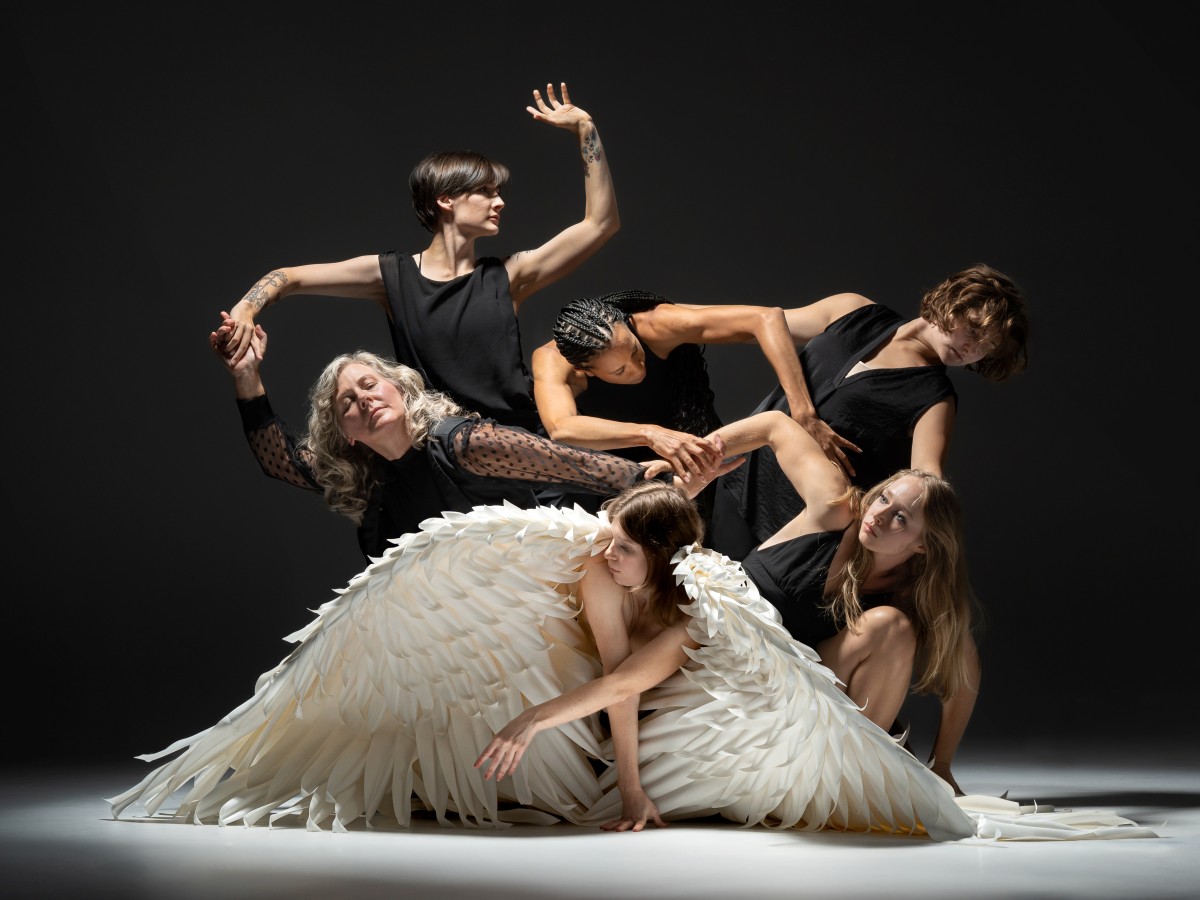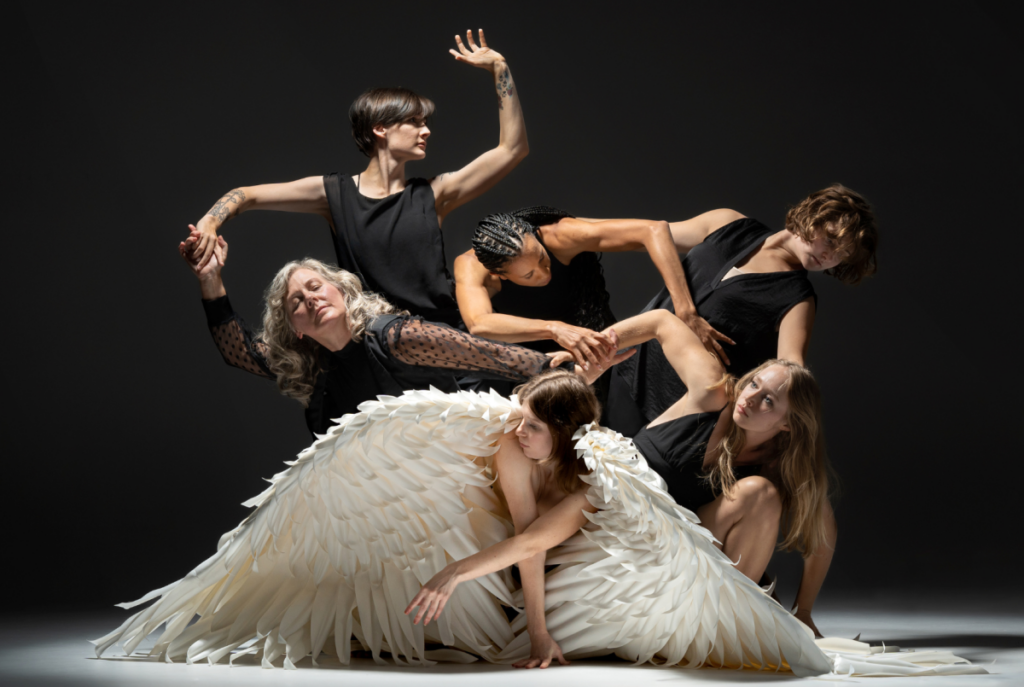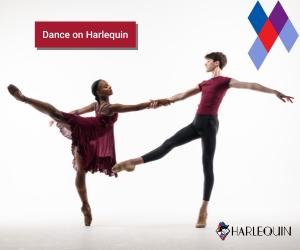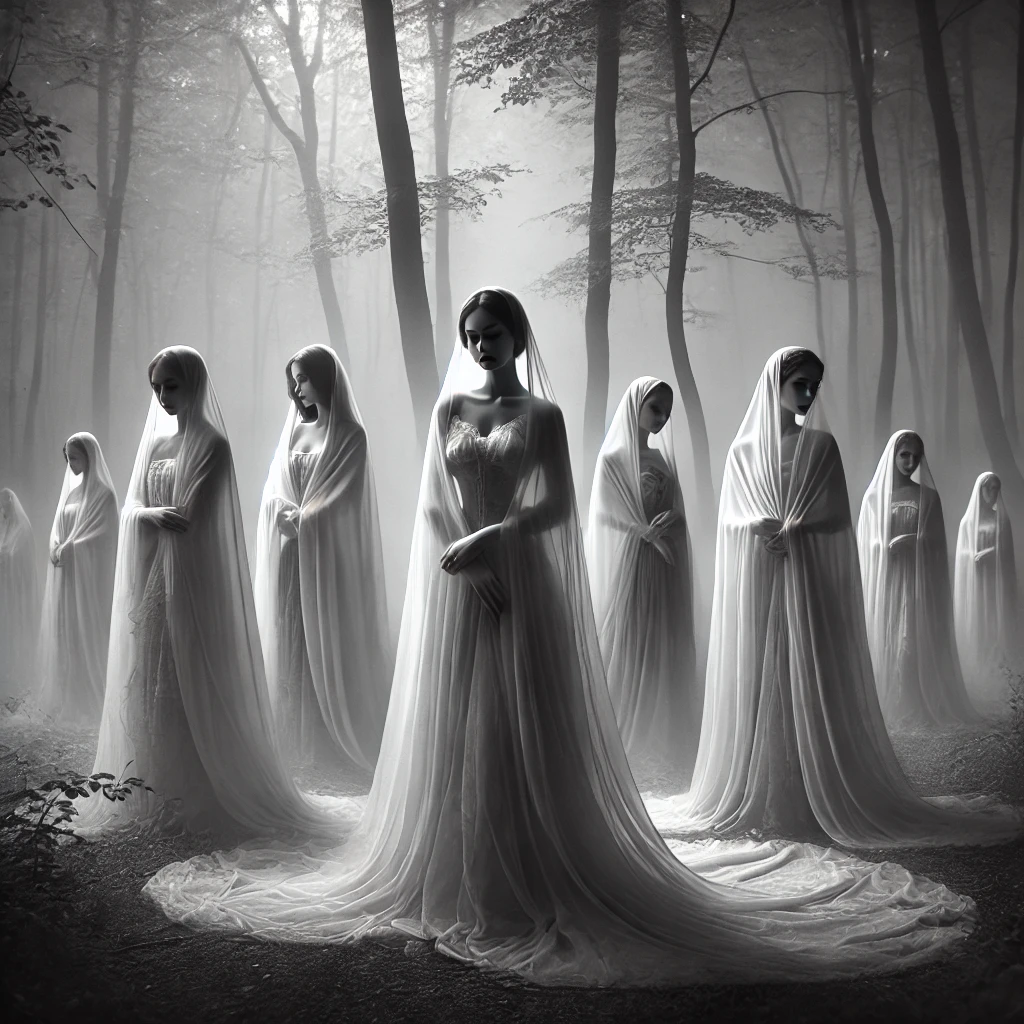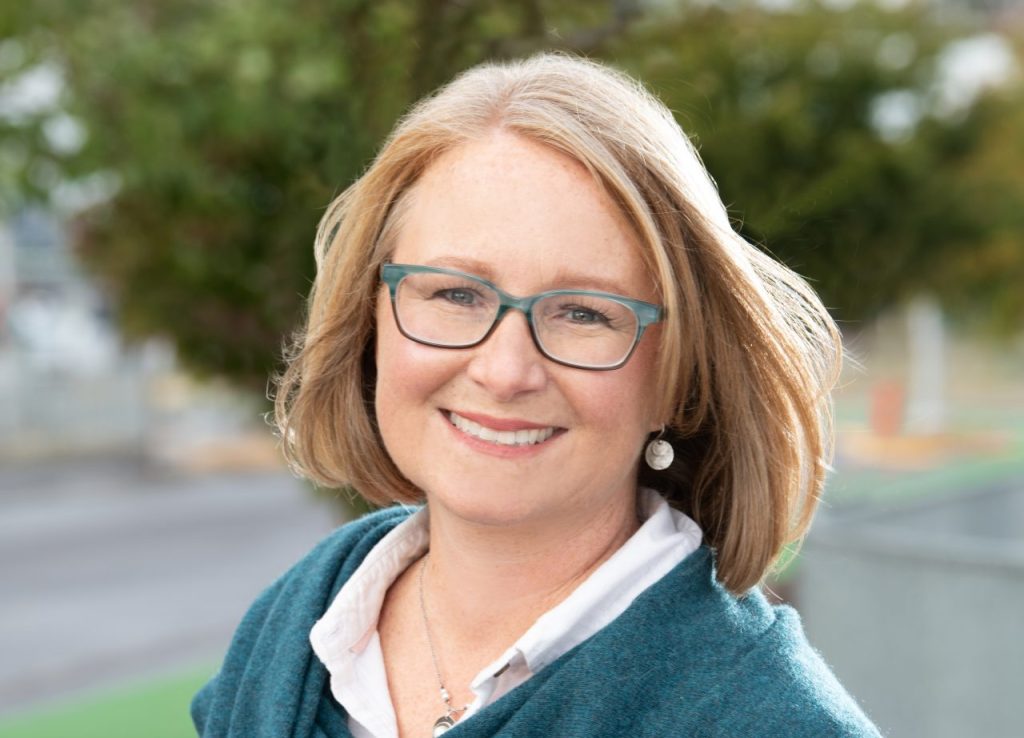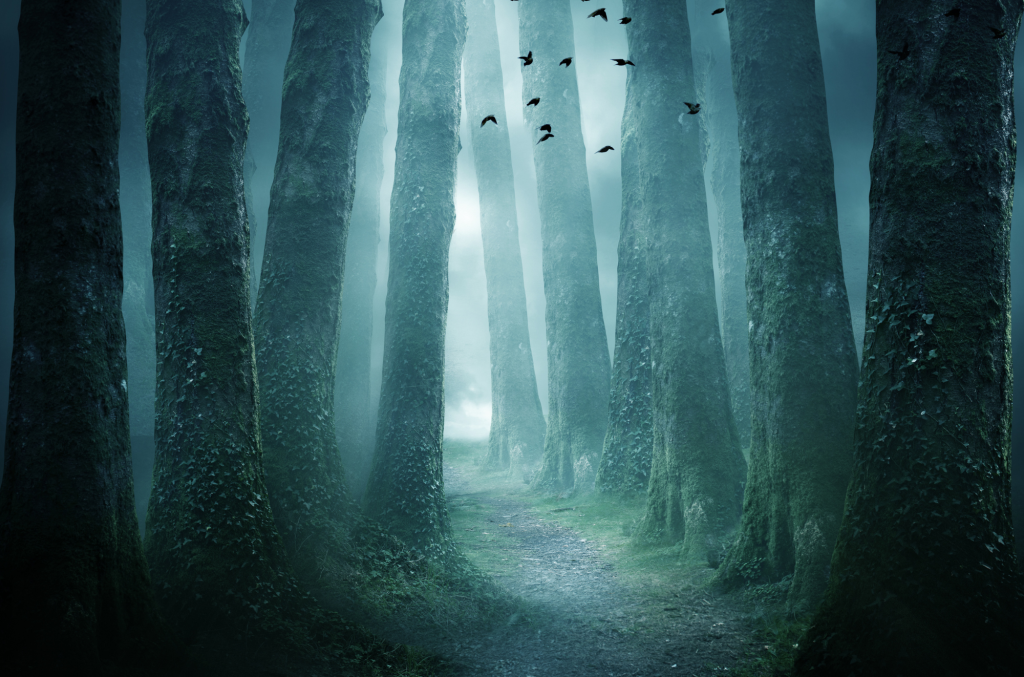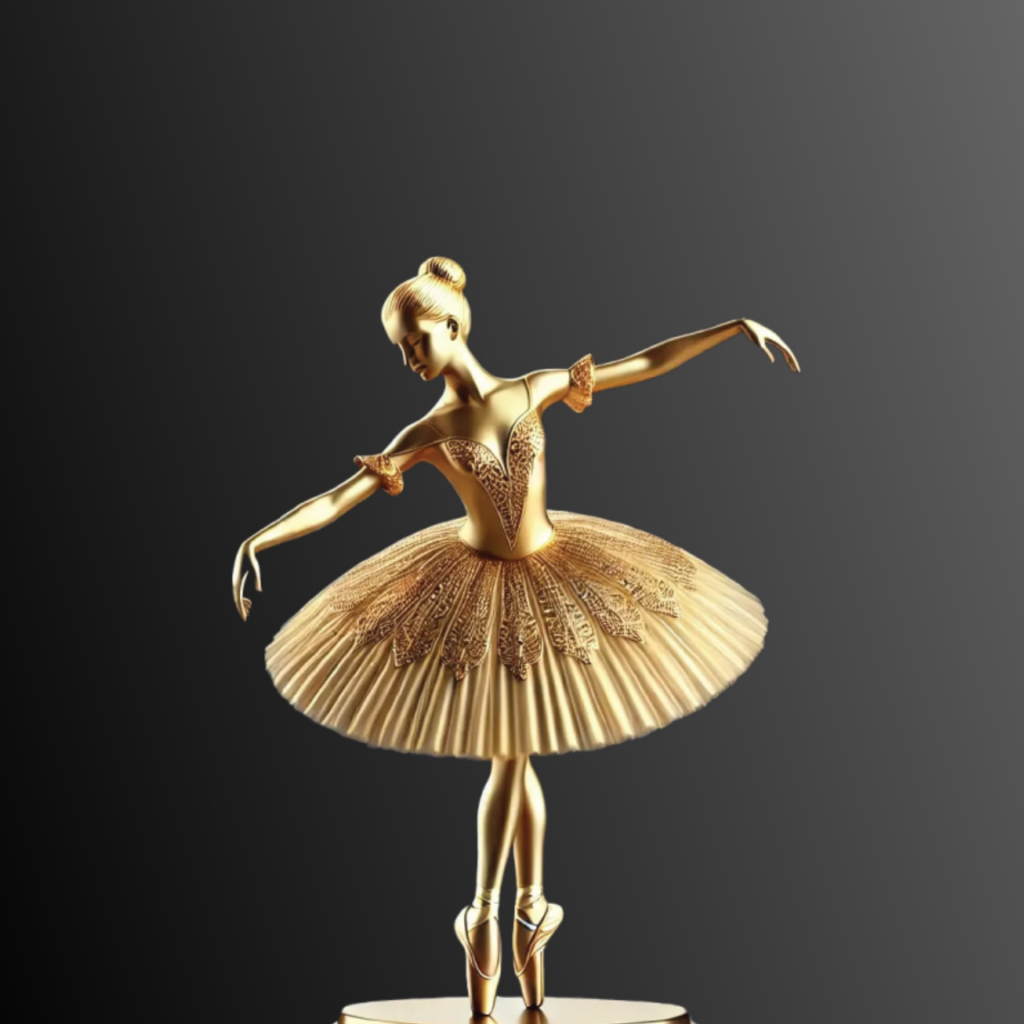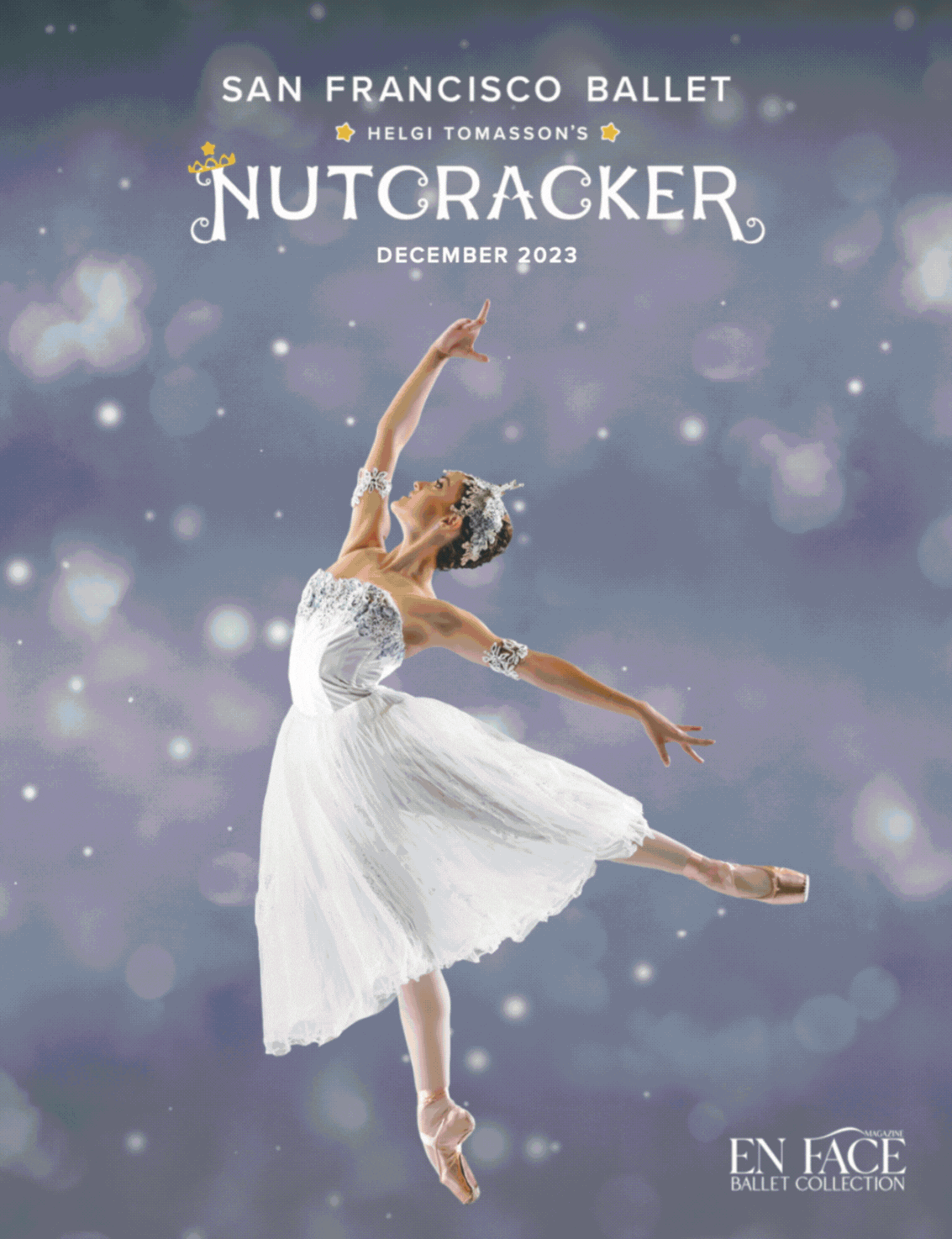We sat down with push/FOLD/s Artistic Director, choreographer, and composer Samuel Hobbs to learn more about the history of Rachmaninoff’s iconic composition, the creative process, and the joyous collaborative efforts with Alissa Deeter, Artistic Director of the Portland Symphonic Choir.
Alanna: I was able to listen to the score of your new work, “Vespers,” while preparing for this interview. I was enchanted – Rachmaninoff’s ‘All-Night Vigil’ truly is a breathtaking piece of music. Can you tell us a little about the history of the music?
Samuel: Premiering in 1915, the ‘All-Night Vigil’ is a truly remarkable and beautiful work! It was one of Rachmaninoff’s most pivotal, and I believe only one of two works that were written for the Russian Orthodox Church. Interestingly, when he had created the ‘All-Night Vigil’, Rachmaninoff was no longer attending church. I speak a little bit more below why I feel that might be the case.
I think there is a deeper history than how we traditionally speak about the origin of the music. Rachmaninoff grew up in the Russian Orthodox Church, through which he became fascinated with the Kieve style chant that is prevalent in this work. For ‘Vespers’ we are performing the first 13 movements of 15. We felt this was true to what he had written and honors the purpose of all of the movements as a whole.
Alanna: As a composer yourself, for most of your works you normally compose and choreograph in tandem. What was it about ‘All-Night Vigil’ that inspired you to make this musical departure in the history of push/FOLD’s original work, and is this the first time you’ve choreographed to another’s music?
Samuel: Whoa! This is actually quite a big question, haha.
I don’t know if the ‘All-Night Vigil’ was an inspiration for this departure, but it certainly was the right timing and something I’ve held in my mind for years. I know I could speak to the beauty of the work as to what drew me to it. But at this moment, it feels more appropriate to speak to the practical nature of the departure.
‘Vespers’ will actually be the third time I’ve choreographed for push/FOLD to someone else’s music ever, and all three were in the past 15 months! The departure was a practical part of the process for getting us here, in both building towards this production and beginning a relationship with the Portland Symphonic Choir, and also to keep myself invigorated as a composer and choreographer. Thinking forward about push/FOLD’s trajectory, and my own as a creator, I want to build and achieve something better for ourselves each day. I am also cognizant that artists and companies can find themselves in ruts if they aren’t careful. We can learn so much about our own process when we hold up something in contrast to what we’ve been doing. In the past year, I’ve really felt the pull to branch out.
I started composing in 2011 while I was healing my body from what I thought were career-ending injuries. It took me another few years to get back into my body. Then, in 2014, I made my debut in Portland as a composer-choreographer and have kept composing since.
It has been a really intimate process to compose and choreograph for the majority of the time push/FOLD has been in existence. It is part of why I think we’ve carved out the niche we do. I feel very fortunate to have such creative control over the entire aspect of a performance. It is also a LOT of additional work. Right now, I chuckle to myself: we are one week away from our premiere of ‘Vespers’, and I don’t think this was any less work!
‘Vespers’ is the first time I’ve created a comprehensive evening-length production that didn’t use my music. Our last work, called ‘Ozymandias’, was the only other work we’ve created as a company that wasn’t to my own music (besides the performance that I speak to below with PSC that really started our relationship). ‘Ozymandias’, to me, I think was another practical endeavor and a bit of a warm-up for ‘Vespers’.
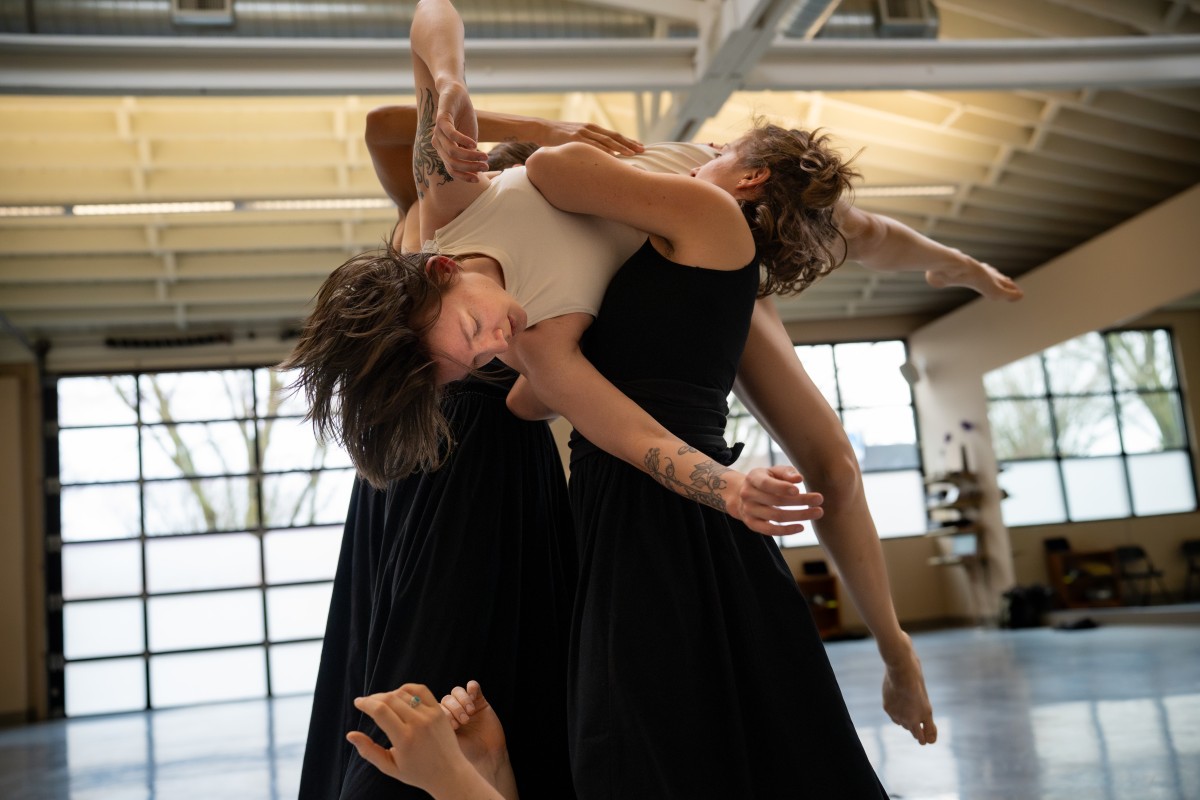
Alanna: For you, collaboration and creativity often go hand in hand, and ‘Vespers’ is no exception. How did this project develop into a joint venture with the Portland Symphonic Choir and their Artistic Director, Dr. Alissa Deeter?
Samuel: I have had the idea of composing for a live choir for several years, and I have had the idea of choreographing/performing to a live choir for about a decade or more. I sang in choirs through college, and even had the opportunity to perform at Carnegie Hall. Rachmaninoff’s ‘All-Night Vigil’, though I’ve never performed it, is rich and viscous. The idea of choreographing to it has always stuck in my head and felt like an appropriate step forward into newer realms of creation.
In 2022, I reached out to Alissa Deeter, the Artistic Director of the Portland Symphonic Choir (PSC), with a soft introduction about working together. Alissa wrote back about wanting dance for a few songs for PSC’s tribute concert playing a month later. I thought, this was it! This was my opening, and I said, “Yes!” It was definitely out of my comfort zone to choreograph to music I had no part in selecting. But, I knew it was necessary. It was also a ton of fun. (She passed me four songs from Leaornard Bernstein’s ‘The Lark’!)
A few weeks after that initial invitation to work together from Alissa, during a site visit for their concert, I brought up creating an entirely new production to Rachmaninoff’s ‘All-Night Vigil’. Within about three minutes, we had a spit-and-a-handshake deal that grew into what opens next week!
To carry out this vision for ‘Vespers’, because of its historical weight, and how it is traditionally performed, I really wanted a comprehensive collaboration and fusion of our respective mediums. We’ve had numerous meetings and read-throughs of the music, each with both Alissa and I going back and forth about ideas and approaches. Working with Alissa and Claire Robertson-Preis (PSC’s Operations Manager and dictation specialist for the Vigil) has been an absolute dream. It is also a lot of fun to know that the other half of the production is in great hands.
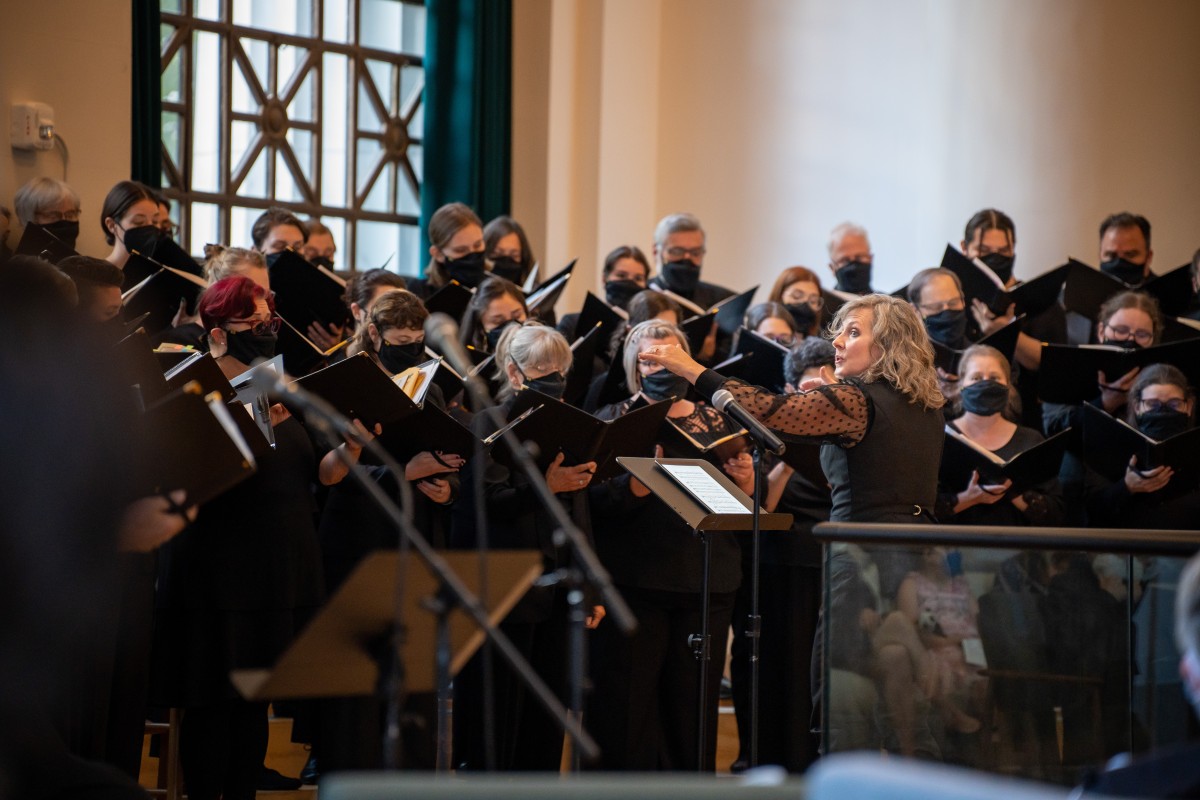
Alanna: There will be one hundred vocalists singing and five dancers performing in this production, no small number of artists to manage! What has the rehearsal process been like on both sides, and what has rehearsing together looked like?
Samuel: Well… we like to keep things exciting ;). Our first time rehearsing together will actually be in the theatre! We have two tech days, the final culminates in our invited Dress and Student Preview show on the 18th. This was the only practical way to approach the sheer size of the cast. The PSC rehearses in the evening, and we rehearse in the mornings so we all can work outside of dance afterwards.
Over this process, I have been to a few of the choir rehearsals, and when we first started, Alissa had also provided me the recordings of the last time PSC had performed the ‘All-Night Vigil’. Since Alissa is truly approaching the ‘All-Night Vigil’ with a new take, through our read-throughs, we’ve been able to get recordings of others’ takes on the ‘All-Night Vigil’ and have modified some of the recordings’ tempos to get an idea of feel. This was all in lieu of rehearsal recordings since so much changes from the beginning of the rehearsal process until now for any respective art form.
For the past two months, we’ve each dove deep into Rachmaninoff’s work: Alissa in the execution and history of the work, and myself in the arc, mood, and undertone I believe Rachmaninoff has placed inside it for us to find.
For me, the feeling of the music is probably the most important aspect of creation. I mentioned earlier that the ‘All-Night Vigil’ is viscous. I experience a synethesia of movement and sound—I hear movement and see sound. So, there is a very physical sensation when listening to this music. It is partly why I am drawn to it (to speak to an earlier question from above).
Though we may not have been in the same room together, our process together has allowed us to lock our steps together. After we came back from holiday, Alissa was able to get us some rehearsal recordings. Aside from a few differences in what it sounds like due to the nature of a low-fi rehearsal recording, and a few phrases to sync up, we’re right there!

Alanna: The word “vespers” is the Latin word for “evening,” but it also broadly refers to evening prayers and services as traditionally recited and attended by longstanding orthodox branches of the Christian church. Did either of these meanings influence your selection of “Vespers” as a name? And if not, what led to the selection of “Vespers?”
Samuel: Upon reflection, this is the second piece that has a temporal component in its title that I’ve created. One of the first major works I choreographed and composed was called ‘November’. I think they both hold a similar space.
I’ve actually always called this show ‘Vespers’, far before I met Alissa. I played with a few others before we needed to go to print and get the press release out, only because people kept brining up the religious associations. But I’ve never held that meaning and any other name just didn’t feel correct. Saying ‘Vespers’ almost feels like the name “Muad’dib” from Frank Herbert’s Dune. It is piercing and has a blunt gravity to it. It is a powerful word, for a powerful moment in time.
I know that there is a very deep Christian and religious association with the word ‘Vespers’ and the music. People have even gone as far as tried to assert an ownership over it and talk to us about the reverence they hold over this piece. I think that’s a very personal choice.
When Rachmaninoff created this work, he had stopped going to church. Because I try not to pay attention to the translations of the lyrics either, and really just listen to the instrument of the human voice, when I listen to the ‘All-Night Vigil’, there is an undertone that I think illuminates his personal relationship with spirituality and the church that is counter to the traditionalized reverence people hold.
I believe this music was written and was intended to be a reflection of Rachmaninoff’s relationship to his spirituality, not in service to spirituality or religion. I think the lyrics and words are just the method for delivering this beautiful music and are only a thin layer to its depth. Rachmaninoff was fascinated with chant that developed as a child. It makes sense that he would draw upon that in reflection. This undertone is the access point that I feel provides the inspiration for the movement for this new production. So, yes. ‘Vespers’ to me holds the original meaning of ‘evening’—the completion of something, or any number of the additional meanings we can find about the significance of an evening in spirituality, in society.
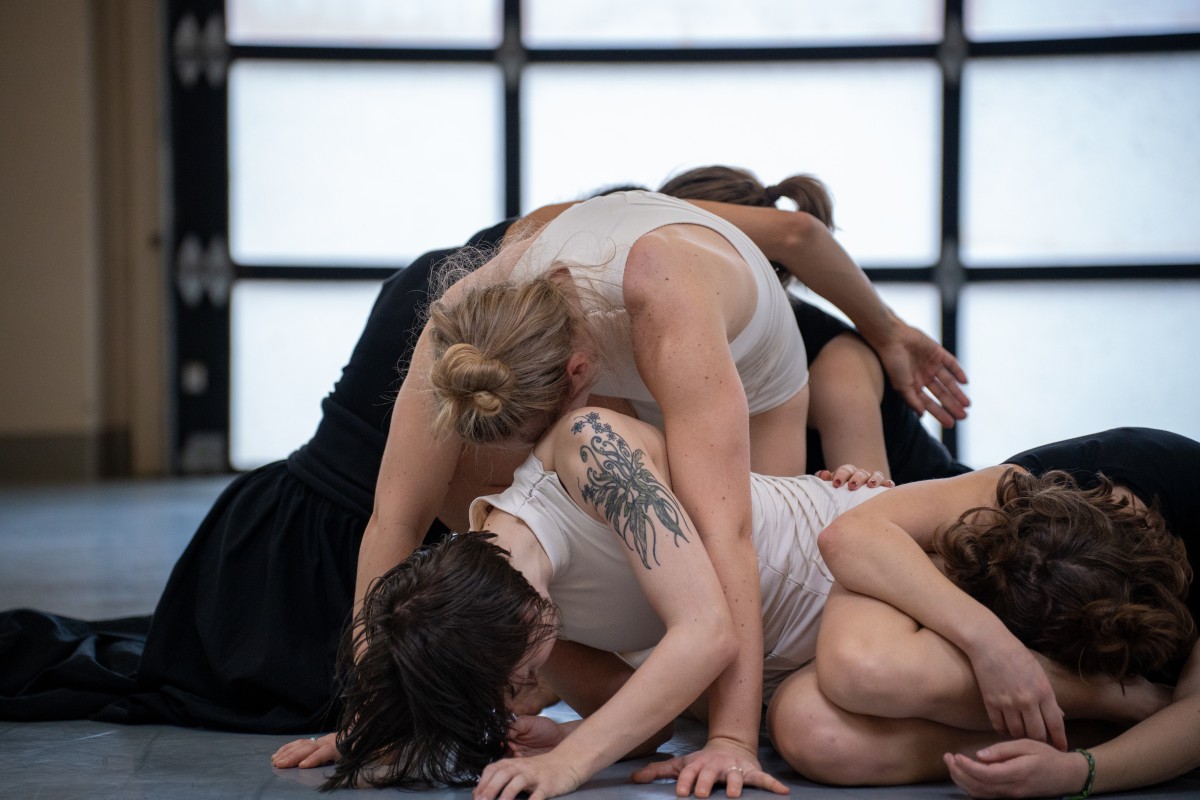
Alanna: I was able to view one of the duets during rehearsal and was mesmerized – the movement quality was languidly graceful, like honey slowly sliding down each of the sung lyrics. Can you tell us more about this interaction of contemporary movement with historical music, and what they bring out of each other?
Samuel: I mentioned above the synethsesia I experience with movement and sound. There is also a really incredible facet of the human brain when it listens to something; we can divorce ourselves from any sort of meaning/learned patterns of sound, and in doing so, our brain rebuilds new intermediate sounds and morphemes—the transitions. Some might interpret that as overtones. But, if we pull out further, there are wisps and crackles that sparkle and drip throughout the music that fall between and over the beats and swells in the musical notation. There is far more to this historical music that I think we’ve traditionally seen and heard.
One of the biggest aspects of how we train and teach movement with push/FOLD, and our classes, is rooted in transition. Without going to far into it, our technique is called ‘Visceral Movement Theory™’. We invert our understanding of movement and shape so that we can move our bodies as they were natually intended, within Power. Example: Instead of holding my arm in 1st or 2nd position, I am instead forming the negative spaces around my limbs and contours of my body. The question then becomes, “if I push into this, what is the response in the space?” It is partly the origination and namesake of our company: PUSH, FOLD. It is also how we reconcile this music with contemporary movement.
Rachmaninoff achieved inspired genius with the ‘All-Night Vigil’. By listening to the sounds and arcs of the ‘All-Night Vigil’ as a whole, the movement comes; the meaning comes. Ideally, they build into something that hasn’t yet been revealed. That’s what really excites me about this collaboration!
Alanna: How does this work embody a “reconciliation of past and future,” and what can it bring to us who are caught in between, living in the present?
Samuel: I think the idea of living in the present, or being present, is the act of reconciling the past and the future. I believe there is an untold history of the ‘All-Night Vigil’ and I think we are all brave enough to take a really wondrous look into discovering that history.
While going through this work and finding the melding points for both Alissa Deeter and myself from our respective understandings and art forms, there were deep conversations about how the music was/is traditionally performed. Also, the rumbles from the choral community deeply attached to the ‘All-Night Vigil’ and the preconceptions, notions, and assertions audience members have about what the dancing may/should look like—almost a resistance to step forward. We’ve even had someone tell us they won’t be attending because they feel that the dancing will distract from the music. I think those are all valid opinions rooted in tradition. I question whether or not that is coming from history.
We’ve approached this collaboration as a melding of forms. Part of the push/FOLD culture and ethos is that we are after building something greater than ourselves. I think this production does that.
The trick of this production is truly framing it as something new. It is neither a choral performance, nor a dance performance. The dancing accompanies the vocalists no more than the vocalists serving only the dancing. It’s a partnership. It is the negative space interacting with the forms of our bodies—two sides of a coin. It is a reconciliation of our preconceptions with what is going to transpire next week.
I don’t believe any one person, group, or belief can own art. This collaboration pushes us to grow: as a community and as artists. How incredible to be a part of it!
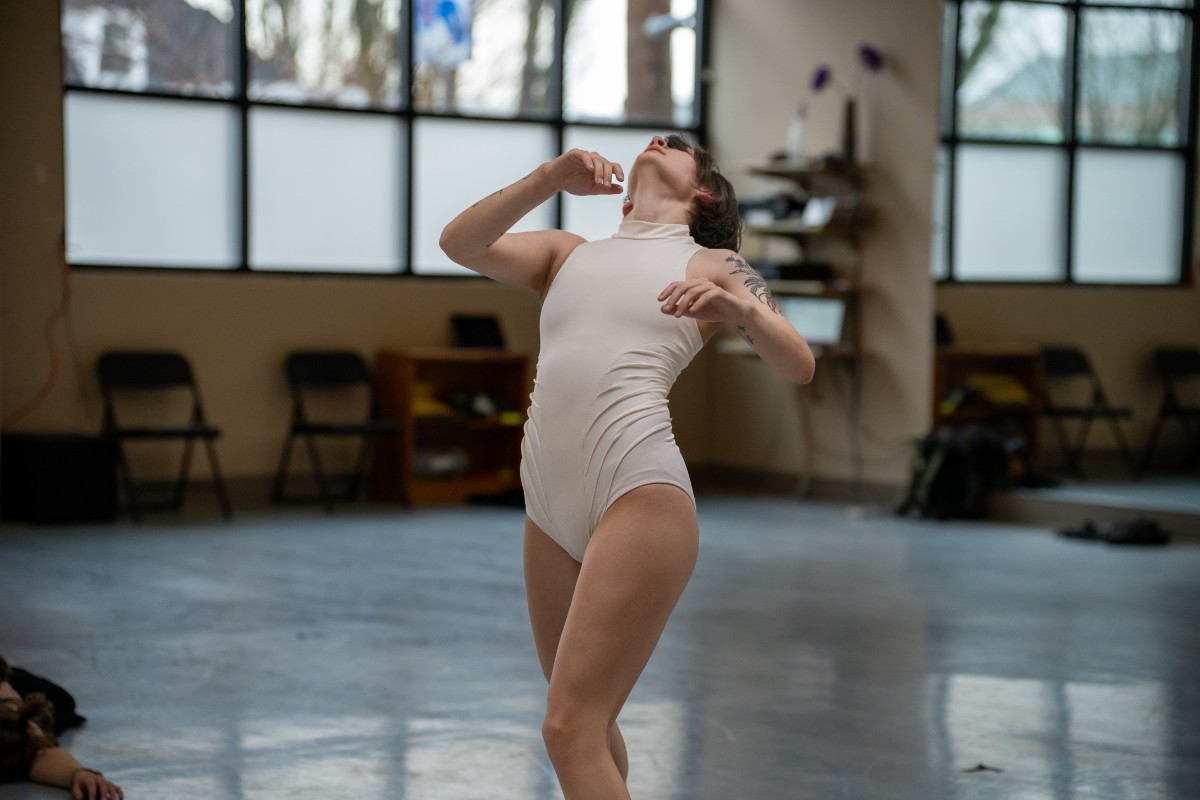
Alanna: While seeing the performance in person is of course preferred, you are also making this work accessible to an even wider audience via a multi-camera livestream. Can you tell us what we can expect to see and hear with that experience and how our readers from other parts of the country can join in?
Samuel: Absolutely! Since 2020, we’ve livestreamed every production push/FOLD has self-produced.
Last year’s production of ‘Illum’ at the Reser during the freak snow storm, our livestreaming came in handy since audiences requested we just give them livestream access in lieu of a refund for their in-person ticket! Jamuna Chiarini from Oregon ArtsWatch gave us one of my favorite press quotes while she was able to review via the livestream, “the scenes looked like paintings.” Others have commented that it is akin to watching a Netflix show. Recently, during our Union PDX festival, one audience member wrote to us to say they had seen the show in person, liked it so much, bought a livestream ticket to see it in a way you can’t in a seat, and that they’ll be doing that from hear on out.
We really take great enjoyment of providing the livestream. We’ve learned that a lot of people can’t go in-person or don’t feel comfortable to do so for various reasons. It’s an Access and Equity issue. I am also a film-maker and photographer, so I am also a bit of a gear-head. I really geek out on all of it.
We use three film cameras, two of which have camera operators to zoom in and get close to the action. It is a very immersive experience. Earlier this summer, when I looked at our numbers, we’ve reached 49 countries with our livestreams. Pretty darn incredible. I would like to see it continue to grow, and it’s another major way we can bring art to more people.
Livestream tickets are available from the link on the pushfold.org/vespers website, and parties can watch on that webpage.
Both the performance and the artist talk afterwards are livestreamed. There is also a live-chat box, so people can chime in and ask questions during the artist talk as well, which is a really fun way to interact with those at home.
Alanna: What other projects do you and push/FOLD have on the horizon to look forward to after this?
Samuel: Each year we produce several new projects and works, in addition to our annual Union PDX – Festival of Contemporary Dance (www.pushfold.org/unionpdx). Come March, we have our 4th Junction show with two other local companies (arial and cirque). We then switch gears to start training for our coming season! I will be getting back on the stage with the dancers to reprise my role for our 2018 breakout production called ‘Early’. We will be touring that work next season. We also make our European debut in the Fall!
We are actively building out our touring for seasons for 24/25 and on into 2026, and have several conversations going on about future collaborations in other cities inspired by our ‘Vespers’ collaboration.
I know as an artist, I am excited to build out another full production and get back into finishing up a couple of dance films.
Lastly, a really fun piece of information, my partner and I are also expecting! So, coming the end of Spring, we’ll will have our newest member of the company and first push/FOLD baby.
It is a really exciting time. I feel very thankful for everyone we are working with.
Alanna: Oh my goodness congratulations! What an amazing new chapter you are embarking on. We can’t wait to see the story continue to develop, but in the meantime what else would you like our audience to know?
‘Samuel: Vespers’ is a truly comprehensive fusion of vocal power and athletic movement, bathed in theatrical lighting sculpting shadow and form. Imagine, 100 vocalists with the dancers creating a living set and world. Come delighted to ‘Vespers’ and stay for the artist talks afterwards. This production is a true celebration of the power of the whole human body.
Please be welcomed to come with or without your preconceived ideas. The singers are not on risers, and the movement is not a series of vignettes overlaid on top of a choir concert. It is something new. We draw upon the human body to create the movement from the rich harmonies of the vocalists. It is a flavor of movement stemming from backgrounds in competitive athletics (Track and Swimming) and martial arts, and dance training (Ballet, Street, Break, and Contemporary Dance and Partnering).
Purchase tickets to see ‘Vespers” in person or via livestream here.
